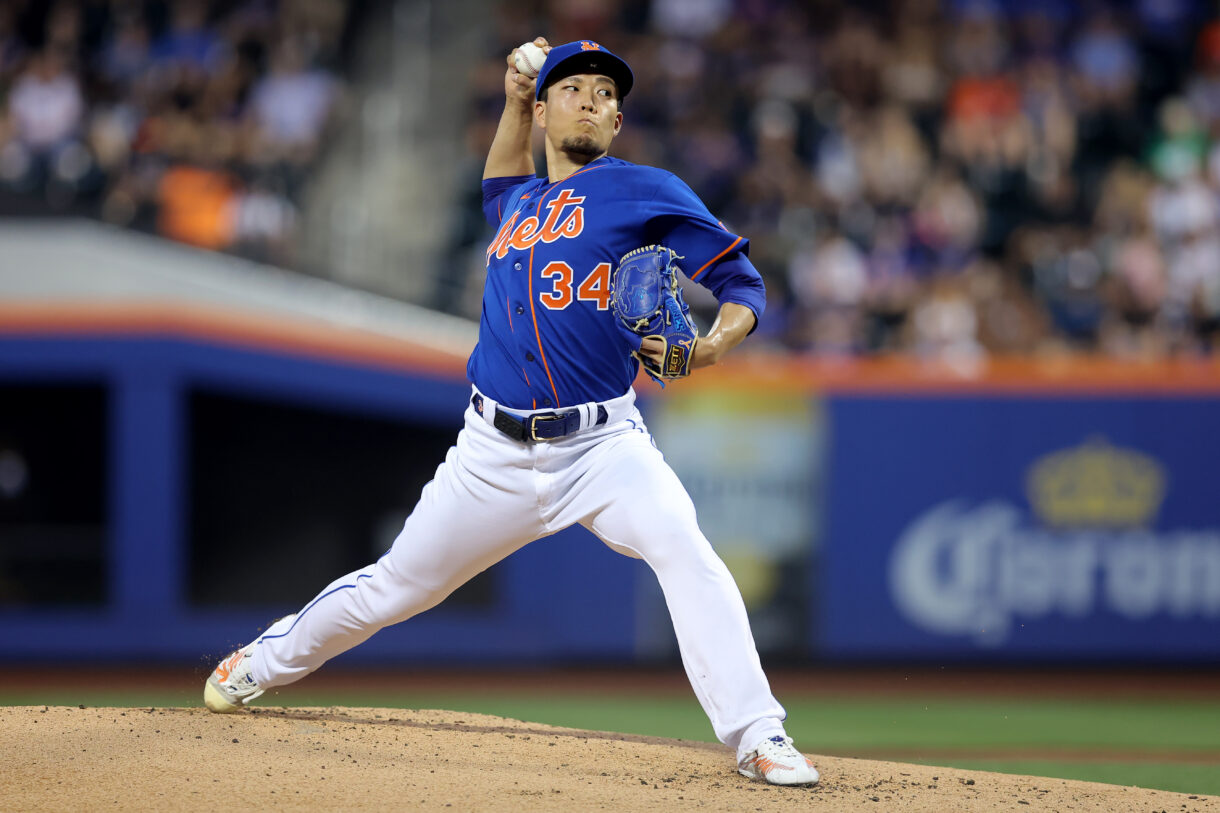
Some seasons unravel quietly. For the New York Mets, the slide was loud and felt like a slow-motion collapse that everybody saw coming but nobody could stop. By the time October arrived, the biggest truth of the year was impossible to ignore: the Mets needed more starting pitching, and they needed it months ago.
The rotation simply wasn’t built to withstand injuries, regression, and the uneven performances that piled up. The breaking point came in June, when the team’s summer downturn began and never truly leveled out. A major part of that story was Kodai Senga, whose season went from dominant to disrupted in a matter of weeks.
Senga’s Electric Start and Sudden Fall
For the first half of the year, Senga was everything the Mets hoped he’d be. He carried a 1.39 ERA into mid-June, carving hitters apart with that signature ghost fork and a rhythm that felt unshakable. He gave the Mets the kind of stabilizing force contenders rely on.

Then the hamstring injury struck. It cost him several weeks, but in truth, it cost him far more than that. When he returned in July, the sharpness wasn’t there. The ERA climbed steadily to 3.02, and his confidence seemed to dip right alongside it. The Mets eventually made the difficult choice to send him to Triple A, hoping a reset would help him rediscover his mechanics and his mental edge.
He never made it back to Queens for the final stretch. By then, the Mets were already losing ground fast, and the rotation simply couldn’t keep pace with the demands of a postseason race.
Trade Talk Settles Over Queens
Because 2026 will be Senga’s age-33 season and health has become an unavoidable storyline, there’s growing industry belief that the Mets are open to moving him. And the chatter isn’t just vague rumor. MLB insider Jeff Passan reportedly described Senga as extremely available this winter, a sentiment echoed by multiple executives around the league.
Availability, of course, doesn’t mean desperation. It doesn’t mean the Mets are just looking to unload him. It means they recognize both the risk and the value. Senga has thrown only 5.1 innings in 2024 and 113.1 innings this past year. Teams see the red flags. But they also see the upside of a pitcher who was virtually unhittable for almost three months.
That combination creates a complicated market. The Mets need quality and depth, yet trading Senga could also help create those if the return is significant enough to help them cover one of their many roster flaws: center field, the bullpen, or the rotation itself, in which case they would need a safer bet to stay healthy. It’s a delicate balance for a front office trying to repair a rotation while managing expectations around a team still built to compete.

What Comes Next for the Mets?
The Mets can’t afford another season defined by thin pitching and unanswered questions. Whether that means keeping Senga and betting on a healthy rebound or flipping him for pieces that reshape the rotation, the decision will shape their 2026 identity.
Senga still has the kind of raw ability that front offices dream about. The question is whether the Mets trust his health enough to keep him or whether moving him now brings them closer to the overall roster stability they’ve been chasing. And with winter just beginning, how long will they wait before making the call?
